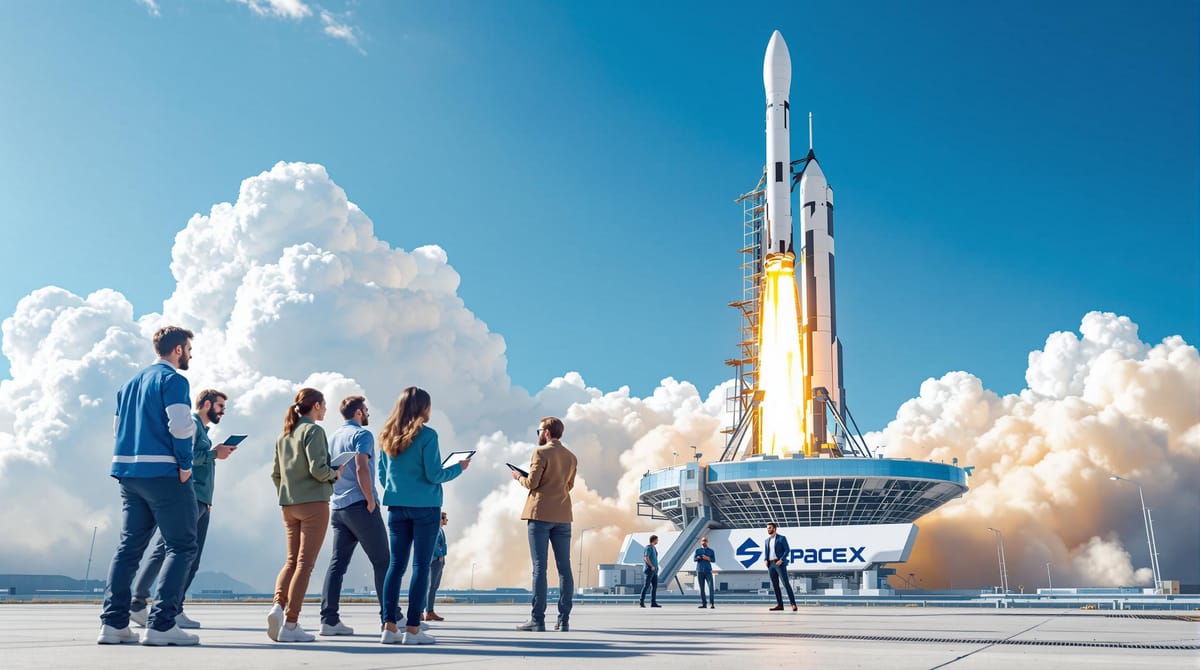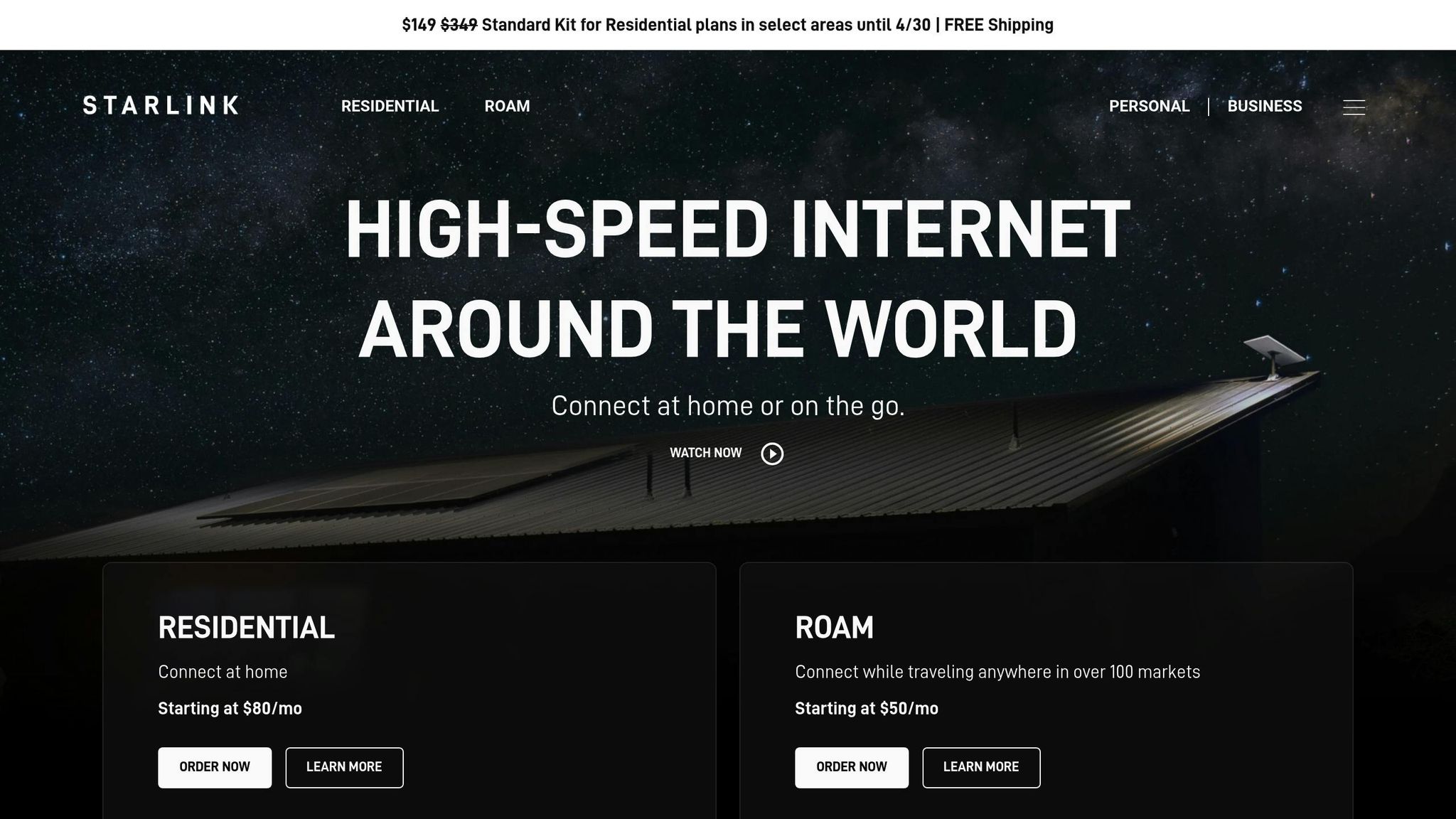SpaceX Capital Raises: Common Questions Answered
Explore how funding has propelled a company to a $350 billion valuation, focusing on R&D, production, and market expansion strategies.

SpaceX's journey from a startup to a $350 billion valuation in 2024 shows how funding and innovation go hand in hand. Here's what you need to know:
- Early Investments (2002–2010): Funded the development of its first rocket, Falcon 1.
- Growth Phase (2015–2020): Success with Falcon 9 and Starlink drove investor confidence.
- $350 Billion Valuation (2024): Achieved through reusable rockets and Starlink's expansion.
Key Focus Areas for Funding:
- R&D: Improving engines, materials, and navigation systems.
- Production: Expanding facilities for rockets and satellites.
- Starlink: Scaling satellite production and global broadband services.
Investor Outlook:
- SpaceX remains private, but speculation about an IPO continues.
- Pre-IPO investment options include private equity funds and secondary markets.
SpaceX's progress aligns with its funding strategy, and its future could include a public offering as it grows its Starlink network and spacecraft capabilities.
Where Does SpaceX Actually Get Their Funding From?

SpaceX Funding Timeline
SpaceX's funding history showcases its rise from a startup with big dreams to a powerhouse in the commercial space sector. Each funding phase played a key role in advancing its technology and expanding its market presence. Here's how its funding milestones aligned with major technological progress.
2002–2010: Laying the Foundation
In its early years, SpaceX secured critical investments that enabled the development of its first orbital launch vehicle, Falcon 1. These funds provided the resources needed to establish its technical foundation and set the stage for future projects.
2015–2020: Accelerating Growth
During this period, the success of Falcon 9 and early progress with Starlink fueled rapid growth. These achievements solidified SpaceX's position as a leader in space exploration and innovation.
2024: $350 Billion Valuation
By early 2024, SpaceX reached a valuation of $350 billion. This milestone reflected advancements in reusable rocket technology and the expansion of its satellite communications network, marking a new era for the company.
Tech Progress and Investment Growth
Recent advancements in technology have drawn significant attention from investors, closely following the milestones outlined in SpaceX's funding timeline. Below, developments in Starship and Starlink highlight how technical achievements align with growing investor interest.
Starship Development Progress
Major steps in areas like launch integration, engine performance, and landing precision demonstrate SpaceX's technical expertise. These accomplishments have played a key role in boosting investor confidence and contributing to the company’s rising valuation. At the same time, improvements in communication technologies are shaping how investors view the company's potential.
Starlink Network Growth

The global expansion of the Starlink network continues to strengthen investor trust. The ability to scale broadband services and operate a vast satellite network points to Starlink’s potential for steady, recurring revenue streams.
Fund Usage Breakdown
SpaceX's capital allocation highlights its focus on pushing boundaries while scaling its operations. The company channels investor funds into key areas to drive growth and maintain its edge in the industry.
R&D Investment
SpaceX invests heavily in research and development to improve propulsion systems, materials, and control technologies. For example, the use of stainless steel in Starship offers a mix of cost savings, durability, and heat resistance.
Key R&D areas include:
- Propulsion Systems: Advancing the Raptor engine
- Materials Science: Enhancing thermal protection and structural designs
- Control Systems: Improving navigation and landing technologies
These efforts strengthen SpaceX's ability to scale production and innovate.
Production and Facilities
SpaceX operates a network of manufacturing and testing facilities designed to support its ambitious goals:
| Facility Type | Primary Function | Location |
|---|---|---|
| Launch Sites | Orbital launches and testing | Cape Canaveral, FL & Boca Chica, TX |
| Manufacturing | Rocket and satellite production | Hawthorne, CA |
| Testing Facilities | Engine and component validation | McGregor, TX |
These facilities are growing to meet increasing production needs.
Starlink Market Entry
Starlink's funding priorities are split between hardware production and expanding its market reach:
- Hardware Production: Scaling the manufacturing of satellites and user terminals
- Market Expansion: Building infrastructure to support services in new regions
Investment Outlook
Technological progress and growing markets are shaping SpaceX's funding strategies and attracting investor interest in a potential IPO. These developments have fueled ongoing discussions about when the company might go public.
Potential SpaceX IPO
Although SpaceX remains private, speculation about an IPO continues. Several factors will likely influence the timing, including:
- Increasing Starlink revenues as its subscriber base grows
- Progress in next-generation spacecraft development
- Changing market dynamics in the tech and space sectors
- Strong private funding rounds that reduce the immediate need for public capital
Starlink Revenue Projections
Starlink's global expansion and growing subscriber base make it a critical revenue source for SpaceX. By extending its international footprint and building supporting infrastructure, Starlink reinforces SpaceX's financial outlook and opens new funding opportunities.
Pre-IPO Investment Methods
For those looking to invest in SpaceX before a potential IPO, the private market offers a few options:
- Joining private equity funds that focus on emerging tech companies
- Buying shares on the secondary market, which involves verification processes
- Participating in employee stock purchase programs available to SpaceX staff
Each of these options comes with challenges like limited liquidity, valuation risks, and the need for thorough due diligence. For more insights on navigating these private market opportunities, check out the SpaceX Stock Investment Guide (https://spacexstock.com), which provides resources and updates on SpaceX and Starlink investment trends.
Summary
SpaceX's funding journey has mirrored its advancements in technology. From its early funding rounds between 2002 and 2010 to an impressive $350 billion valuation in 2024, the company has consistently attracted investor trust with its progress in launch systems and satellite networks.
The company's funding has primarily focused on three key areas: developing next-generation spacecraft, expanding production facilities, and rolling out Starlink to global markets. This approach has allowed SpaceX to stay ahead in technology while creating steady revenue streams.
For those exploring SpaceX's growth opportunities, there are private market options for pre-IPO investments. While SpaceX remains a private company, its ongoing advancements continue to shape its future. For more details on valuation trends and pre-IPO options, check out the SpaceX Stock Investment Guide (https://spacexstock.com). These developments highlight the company's evolving financial strategy as it edges closer to a potential IPO.
Comments ()